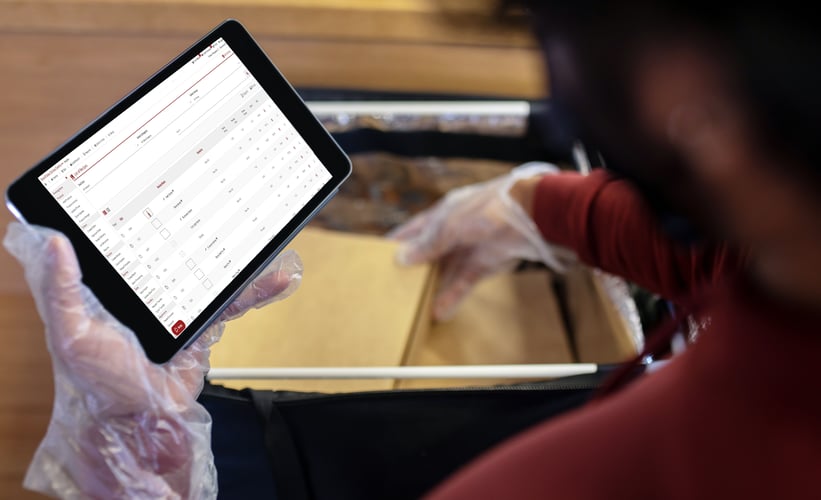
Half the products go to waste in a restaurant if not managed properly. This reality necessitates restaurant owners to switch to inventory management solutions. It not only saves money but also reduces losses.
The food industry has recently become a cause of concern considering the wastage. It may be possible to revolutionise operational strategies at restaurants to curb this. Within the competitive realm of fine dining establishments, the competition sets the rules. If one restaurant is willing a step towards a greener world so will another.
Effective stock control emerges as an indispensable factor for achieving success as more people are paying attention to sustainability. Without calculating food cost, there is no chance at all for survival in the industry. Implementing a well-structured, organised stock control system empowers restaurant owners to minimise waste, optimise inventory levels and consistently meet customer demand with the right ingredients.
Let us thoroughly study how to work your way to have a proper management system in your restaurant. Mastering these key elements enables restaurant proprietors not only to streamline operations but also to attract customers.
Table of Content
- What is a Stock Control System
- Understanding Restaurant Inventory
- Setting Up an Effective Stock Control System
- Establishing Standard Operating Procedures (SOPs)
- Supplier Relationships and Negotiations
- Forecasting and Demand Planning
- Minimizing Wastage and Spoilage
What is a Stock Control System?
The stock control system serves as the fundamental aspect of managing restaurant inventory. It encapsulates procedures from procuring to using, tracking, and regulating the stock.
Tracking and controlling the flow of goods during their purchase, storage, and utilisation is integral to managing inventory. This process guarantees that we maintain optimal stock levels. This measure saves both space and costs for the restaurants.
The food industry extends inventory management to include perishable items, particularly ingredients that necessitate swift turnover for spoilage prevention. This procedure incorporates vigilant monitoring of incoming supplies and precise usage tracking. An efficient management tool can easily minimise waste and optimise cost. This small change can run big in a competitive market where profit margins can be slim.
Understanding Restaurant Inventory
Monitoring ingredients from procurement to plate falls under the purview of restaurant inventory management. The meticulous task of tracking orders, and monitoring kitchen and bar usage is an integral part of the process. Having an insight into what is stored and when it expires in the inventory is equally important. Using efficient stock control software guarantees precise stock levels. It eventually curtails waste and paves the way for flawless operation.

Point-of-sale (POS) software and other automated systems assist in calculating theoretical inventory based on sales; however, they might disregard losses resulting from spoilage or ordering errors due to various factors. Therefore, determining the right software is an integral part of the process.
Setting Up an Effective Stock Control System
For restaurants, efficient stock control proves critical for several reasons. Firstly, it aids in the minimisation of waste and spoilage. By implementing stringent inventory management and a meticulous ordering process restaurateurs can guarantee an optimal level of stock availability. Adding the correct expiry date to the system will help you better manage the stock and help you decide what to use first.
Secondly, optimising inventory levels significantly hinges on the effectiveness of stock control. Restaurant owners can circumvent two potential pitfalls with this approach. These are overstocking and understocking, and both carry detrimental effects on business operations. Overloading ties up capital and storage space resources while an inadequately supplied outlet, conversely, may incur lost sales opportunities. Both lead to the loss of the restaurant as one leads to wastage and profits while the other leads to unhappy customers.
Robust, tailor-made software solutions for restaurant needs form the crux of efficient inventory management. These systems streamline various tasks:
- Invoicing
- Stock counting
- Price updation
- Real-time reporting
- Interactive dashboard
- Enterprise management
- Transfer between locations
- Recipe management
Moreover, when we establish concise standard operating procedures (SOPs), it not only ensures the consistency of our inventory management practices but also fosters a high level of accountability and reduces errors to a minimum.
Establishing Standard Operating Procedures (SOPs)
To achieve effective stock control, instituting standardised inventory procedures is foremost. It involves creating Standard Operating Procedures (SOPs) that outline various tasks related to inventory management, counting, ordering, reporting, etc. It promotes uniformity and simplifies the training process for staff members.
- A well-trained staff will ensure there is better management inside your restaurant.
- Regular audits and strict adherence to Standard Operating Procedures (SOPs) pinpoint potential areas for improvement and guarantee compliance with inventory management protocols.
Supplier Relationships and Negotiations
For efficient inventory management, it is vital to build robust relationships with suppliers. The negotiation of favourable terms such as bulk discounts and timely deliveries notably impacts cost savings and increases inventory turnover.
Open communication with suppliers allows for proactive adjustments based on demand fluctuations.
The result?
Optimal stock availability is a key factor in maintaining hospitality operations at their peak performance.
Forecasting and Demand Planning
Data analytics and trend analysis aid in predicting consumption patterns. It prevents stockouts and overstock situations while anticipating customer demands and optimising inventory levels.
Strategic demand planning optimises inventory turnover and mitigates carrying costs by aligning procurement with sales projections. How it helps:
- Accurate forecasting for foreseeing demand
- Leveraging data analytics for trend analysis
- Strategic order planning to optimise inventory turnover
Minimising Wastage and Spoilage
Maximising profitability and sustainability imperatively require the minimisation of food wastage. Implementing inventory management systems will give you a bird’s eye view of your inventory. A strategic approach tracks usage and identifies trends in wastage, enabling the swift implementation of corrective measures. It can be a crucial step towards reducing unnecessary loss.
Supported by recipe costing and sales analysis, menu engineering optimises the profitability of menu offerings while minimising waste.
Strategies for Achieving Efficient Stock Control
Achieving efficient stock control in a restaurant requires a multifaceted approach that encloses the utilisation of various ailments:
Conducting Regular Stock Audits
Regular stock audits prove essential to identify discrepancies, detect theft or waste and align actual stock levels with recorded ones. Restaurant owners can maintain the accuracy of their stock records by conducting these periodic audits. Restaurateurs can promptly take corrective actions, when necessary, with these measures.
Utilising Data and Analytics
Leveraging data and analytics, restaurant owners can acquire valuable insights into their stock control processes like analysing sales trends and understanding consumption patterns. It can include seasonal variations for them to make informed decisions about stock levels, menu offerings, and ordering quantities.
Staff Training and Communication
The entire restaurant staff must actively engage and cooperate in effective stock control. By offering comprehensive training on stock management, waste reduction, and proper storage practices restaurants take a step forward. It ensures that skilled persons work on inventory management and there is no significant loss.

Conclusion
Mastering stock control emerges as a vital factor in achieving restaurant success. The customers can make or break a restaurant and happy customers are key to an efficiently working restaurant. It is only attainable if the restaurants do not overstock or understock.
In the food industry, optimising stock control hinges on key strategies. If any of these is not working properly losses come hand in hand for the restaurant. Nurturing supplier relationships to ensure consistent availability of goods is an equally important factor. End-of-the-day reports should never be neglected to ensure the proper working of a restaurant. Efficient stock control necessitates more than merely managing inventory, it demands the maximisation of value and the assurance of sustainable business growth.
StockTake Online
StockTake Online revolutionises restaurant inventory management. Its intuitive platform and advanced features empower restaurants to simplify their stock control processes, reduce waste, and enhance profitability. Offering automated inventory tracking alongside real-time reporting and innovative dashboards. StockTake Online equips restaurants with the power to seize control of their inventories driving them towards success. Experience the benefits of StockTake Online and transform your restaurant's inventory management today by calculating your food cost. We have made the formula super simple for you.

